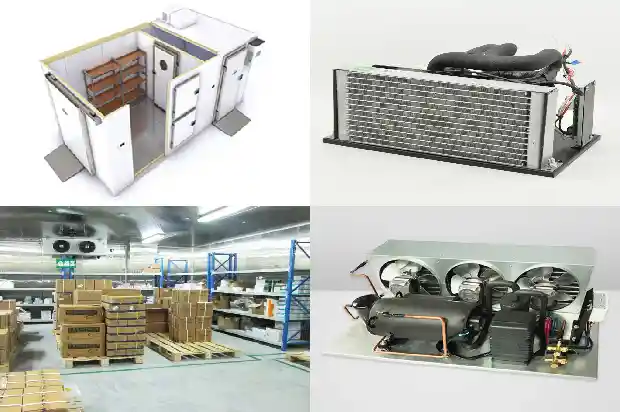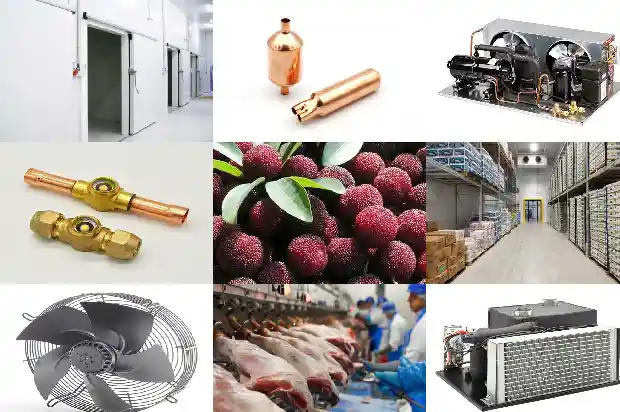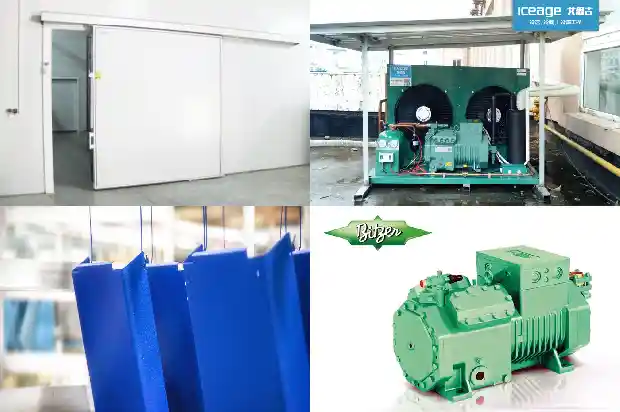Reasons for the Poor Refrigeration Effect of the Cold Storage
2025-03-12
A common fault phenomenon in cold storages is that the temperature of the cold storage does not drop or drops slowly. Now, a simple analysis of the causes of this fault is made as follows:
- Due to poor thermal insulation or sealing performance in the cold storage project, there is a large loss of cooling capacity. Poor thermal insulation performance is caused by insufficient thickness of the insulation layer of pipelines, thermal insulation walls of the storage room, etc., poor performance of the thermal insulation materials, and substandard construction quality of thermal insulation. Poor sealing performance of the storage room, frequent opening and closing of the storage room door or keeping the door open for a long time, and a large number of people entering the storage room together, etc., will all lead to an increase in the cooling consumption of the cold storage.
- The surface of the evaporator is too thickly frosted or has too much dust accumulation, resulting in a decline in heat transfer efficiency. Another important reason for the slow drop in the temperature of the storage room is the low heat transfer efficiency of the evaporator, which is mainly caused by the too thick frost layer or too much dust accumulation on the surface of the evaporator. Except for high-temperature cold storage rooms, the surface temperature of the evaporators in cold storages is below 0°C, and the humidity in the storage room is relatively high. The moisture in the air is very likely to frost or even freeze on the surface of the evaporator, thus affecting the heat transfer effect of the evaporator.
To prevent the surface frost layer of the evaporator from being too thick, it is necessary to defrost it regularly. The following introduces two relatively simple defrosting methods:
① Shutdown defrosting. That is, stop the operation of the compressor, open the door of the storage room, let the temperature of the storage room rise, and then restart the compressor after the frost layer melts automatically.
② Frost flushing. After moving out the goods in the storage room, directly flush the surface of the finned tubes of the evaporator with tap water at a relatively high temperature to make the frost layer melt and fall off.
In addition, there are also methods such as heat pump defrosting and electric heating defrosting, which are all effective methods for defrosting cold storages.
The surface of the evaporator has too thick dust accumulation due to long-term lack of cleaning, which affects the heat transfer efficiency. - Due to system leakage or incomplete vacuuming, there are a large number of non-condensable gases mixed in the evaporator; or due to excessive oil accumulation in the evaporator, the heat transfer effect decreases. Once a large amount of refrigeration oil adheres to the inner surface of the heat transfer tubes of the evaporator, its heat transfer coefficient will decrease. Similarly, if there are a large number of non-condensable gases in the heat transfer tubes, the heat transfer area of the evaporator will decrease, and its heat transfer efficiency will also decrease significantly, and the speed of the temperature drop in the storage room will slow down accordingly.
Therefore, in the daily operation and maintenance, the oil stains on the inner surface of the heat transfer tubes of the evaporator should be removed in a timely manner, and attention should be paid not to add too much lubricating oil to the compressor at ordinary times. It is also necessary to discharge the non-condensable gases in the refrigeration system to improve the heat transfer efficiency of the evaporator.
- Improper adjustment or blockage of the throttle valve, resulting in too large or too small refrigerant flow. Improper adjustment or blockage of the throttle valve will directly affect the refrigerant flow entering the evaporator.
When the opening degree of the throttle valve is too large, the refrigerant flow is relatively large, and the evaporation pressure and evaporation temperature also rise, and the speed of the temperature drop in the storage room will slow down; similarly, when the opening degree of the throttle valve is too small or blocked, the refrigerant flow decreases, and the refrigeration capacity also decreases, and the speed of the temperature drop in the storage room will also slow down.
This phenomenon can generally be judged by testing the changes in the refrigeration temperature, evaporation temperature and low-pressure pressure; according to the frosting phenomena of the throttle valve, evaporator and suction pipe, it can be judged whether the opening degree of the throttle valve is appropriate and whether the refrigerant flow is suitable. The blockage of the throttle valve is an important factor affecting the refrigerant flow. The main reasons for the blockage of the throttle valve are ice blockage and dirt blockage. Ice blockage is caused by the presence of moisture in the refrigerant. When flowing through the throttle valve, it condenses due to the temperature drop, thus blocking the throttle valve hole; dirt blockage is caused by the dirt and scale accumulated in the system blocking the filter screen when flowing through the filter, and some small parts that are not completely filtered will also enter the throttle valve, resulting in the blockage of the throttle valve. - Insufficient refrigerant amount in the system, resulting in insufficient refrigeration capacity. There are mainly two reasons for the insufficient refrigerant circulation amount. One is the insufficient refrigerant charging amount.
In this case, only a sufficient amount of refrigerant needs to be replenished. The other is system leakage, which causes the shortage of refrigerant. In case of this situation, the leakage point should be found first, and after the repair is qualified, a sufficient amount of refrigerant should be charged.
- Poor condensation effect, resulting in a decline in refrigeration efficiency. Due to the lack of maintenance of the condenser, the condenser is too dirty with a large amount of dirt; or the ventilation and heat dissipation are not smooth, the cooling water volume of the water-cooled condenser is small, and the water temperature is high. All these will affect the heat exchange effect of the condenser. Factors such as the small design and configuration of the condenser will all lead to a decline in refrigeration efficiency.
- Low efficiency of the compressor, and the refrigeration capacity cannot meet the load requirements of the storage room. Due to long-term operation of the compressor, or due to faults such as lack of oil and liquid hammer, the running parts are severely worn, the fit clearance increases, the airtightness will correspondingly decrease, and the gas delivery coefficient of the compressor also decreases, and the refrigeration capacity decreases. When the refrigeration capacity is less than the heat load of the storage room, it will lead to a slow drop in the temperature of the storage room. The suction and exhaust performance of the compressor can be tested separately, and the airtight performance of the compressor can be detected. If the faults of the decreased airtightness and refrigeration capacity of the compressor cannot be repaired, it must be replaced.
Related Articles
- Frosting in the Cold Storage? A Detailed Explanation of the 9 Reasons for Frosting of Air Coolers and 4 Defrosting Methods~~
- These Are the Nine Reasons for the Low-pressure Fault! Haven't You Mastered Them Yet?
- Is the Compressor of the Cold Storage Unit Overheating? Find the Reasons Here!
- A Detailed Analysis of the Nine Reasons for the Low Pressure in the Refrigeration System!
- Reasons for Compressor Oil Deterioration and Oil - adding Operations
- What Are the Common Reasons for Difficulties in Cooling a Cold Storage?
- Analysis of Seven Reasons for Ice Formation in Computer Room Air Conditioners
- Reasons for Frost Formation in Cold Storage and Defrosting Methods
- What Are the Reasons for Insufficient Air Output of Screw Air Compressors?
- Reasons for Pump Body Failures in Cold Storage Compressors
- What are the reasons for the inactivity of the automotive air conditioning compressor? What are the common faults?
- What are the reasons for the frequent start-up and tripping of the refrigerated air dryer in the cold storage?
- Reasons and Solutions for High and Low Condensing Pressure in Air-cooled and Water-cooled Systems
- 15 Reasons for Excessive Temperature Rise of Motors
- Reasons for Installing Thermal Insulation Layers in Cold Storages
- What are the reasons for the poor oil return of screw compressors?
- 7 Reasons for Low Air Pressure in Cold Water Unit
- Reasons for Higher Cost of Controlled Atmosphere Cold Storage than Ordinary Cold Storage
